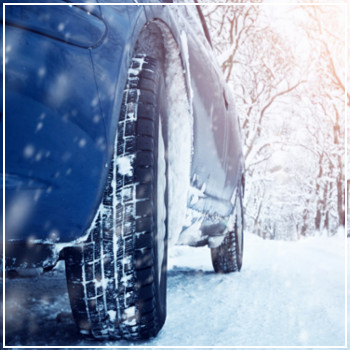 Winter driving in New England is a dangerous adventure! When you have to get home from work in a sudden blizzard or sleet storm, it can be scary behind the wheel. The situation becomes worse when your vehicle has not been winterized. What steps can you take to improve your safety on the roads this winter?
Winter driving in New England is a dangerous adventure! When you have to get home from work in a sudden blizzard or sleet storm, it can be scary behind the wheel. The situation becomes worse when your vehicle has not been winterized. What steps can you take to improve your safety on the roads this winter?
Preparing Your Vehicle
For drivers of all ages, winter driving can be intimidating. Snow, sleet and ice can wreak havoc on the roads, which makes them unsafe for vehicles. No matter how much experience you have driving in these conditions, it is important to plan ahead and prepare for the worst.
1. Check Antifreeze Levels
Antifreeze, or coolant, prevents a car’s engine from overheating or freezing. It also protects the engine from corrosion, which can cause premature car troubles. Consult your owner’s manual for the appropriate ratio of water to antifreeze in winter weather conditions.
2. Inspect the Battery
A dead battery on a cold winter night spells trouble. To avoid this crisis from happening to you, understand that a car battery’s capacity is significantly decreased in cold weather. Before the winter arrives, it’s important to check the voltage and for cracks in the cables. Even if the battery seems to be working fine, check the manufacturer’s date.
3. Brake Maintenance
In the winter, it’s recommended that drivers increase their following distance by at least 10 feet. If you have to slam on the brakes or are unable to stop your vehicle due to worn brakes, you could end up causing a serious accident.
4. Check Tire Pressure and Tread
Low tire pressure makes it more difficult to control your vehicle. This is particularly dangerous in the winter, when hitting a patch of ice can easily lead to a spinout. Loss of tread lessens the grip between your tires and the road, another winter driving hazard. Have all-weather tires inspected during the fall, or switch to a winter set at the end of the season.
5. Switch Engine Oil
In the winter months, you ideally want to use thinner engine oil. In the summer, a thicker oil is often used because it thins in the heat. When it’s cold outside, your car’s engine oil tends to thicken up in response to the frigid temperatures. If it becomes too thick, it won’t circulate.
6. Replace Windshield Wipers, Fluid
Windshield wipers work hard in the spring, summer and fall to combat rain, hail and other debris. Come wintertime, your windshield wipers should be strong enough to fight ice build-up and snow. The proper wiper fluid can also help; a winter formula will not freeze on contact!
7. Keep an Emergency Kit
Lastly, for the safety of you and your passengers, keep an emergency kit in the trunk of your car. In the event that your car breaks down on a cold winter night, be prepared with the following items:
- Flashlight
- Flares
- First-Aid kit
- Batteries
- Water
- Bag of sand
- Blankets
- Matches
- Charged cell phone
- Radio




